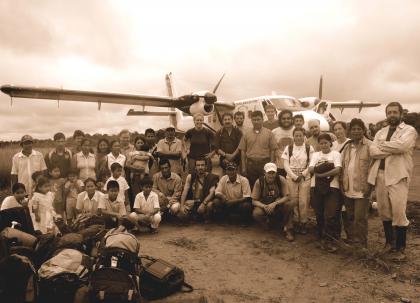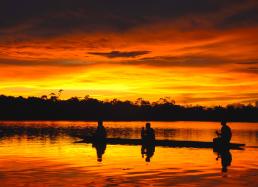1. A Conservation Expedition
As the Director of the Rapid Inventory Program here at The Field Museum, I bring together multidisciplinary teams of biologists and social scientists to conduct one or two inventories each year in diverse and threatened regions, mainly in South America. Our goal is to use the results of these inventories to catalyze the protection of these areas.
While conducting the inventories and compiling the recommendations may be rapid—completed within a few weeks—ensuring that conservation is implemented on the ground takes much longer. Final reports take 6-8 months to compile, then championing our recommendations and advocating for protection can take many more months of collaborative effort with local and national organizations, governmental agencies, and others. Results typically unfold slowly over time, but produce long-lasting change that result in the protection of millions of acres.
For example, the expedition you’ll be following—our Rapid Inventory of the biological and cultural diversity in the Cuyabeno-Güeppí region of the Amazonian lowlands—actually occurred in October of 2007. This inventory was the 20th undertaken by the Field Museum’s Rapid Inventory Program. It was our first bi-national inventory, with sites in both Ecuador and Peru that fell within a proposed conservation corridor to be managed as an integrated unit.
We spent three weeks in the humid, wet forests of the Amazon basin, recording all of the plants, fishes, frogs, snakes, birds, and mammals that we saw. After presenting our initial recommendations to government officials, we completed our official report in June of 2008. And today, we continue to work with governmental and non-governmental agencies to finalize the designation of the Zona Reservada Güeppí as a conservation area.
So, as you follow along with our expedition, you’ll have the unique opportunity to see the big picture—the planning, completion, and results of a Rapid Inventory from start to finish. To learn more details about the scope of our work, browse through my expedition profile, and take a look at my “Video Report 1: Rapid Inventory Program”.
The following blogs are taken from the journal entries and video reports made by me and my team members during the expedition. Through these, I hope you’ll get a taste of the sense of adventure, wonder, camaraderie, effort, and satisfaction that we experienced. And I hope that the powerful results of our work will both inspire you with hope for a sustainable future and illustrate that focusing on the conservation of nature and culture can produce positive long-term benefits for all.
Thanks for joining me and my team on this journey!
Corine





